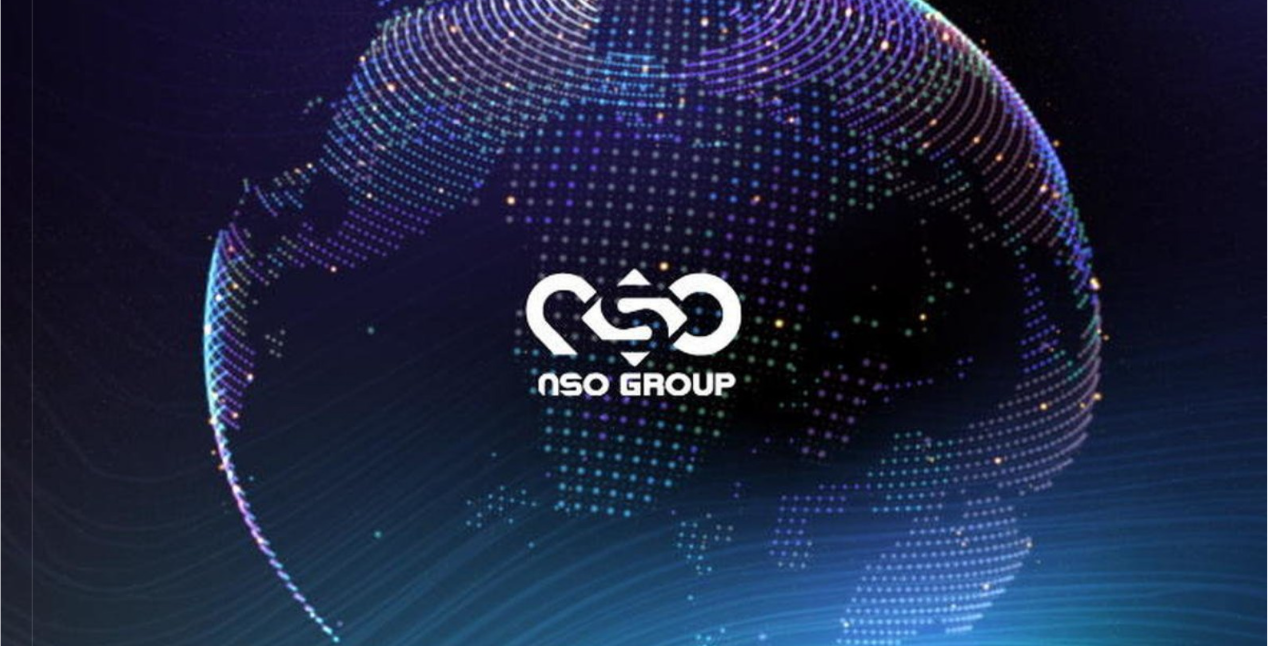Flaw In Kia's Web Portal Let Researchers Track, Hack Cars
Read more of this story at Slashdot.
Read more of this story at Slashdot.
Read more of this story at Slashdot.
Read more of this story at Slashdot.
Read more of this story at Slashdot.
Read more of this story at Slashdot.
Read more of this story at Slashdot.
Read more of this story at Slashdot.

La Cour de cassation a rejeté les 13 pourvois qu’avait intentés le Maroc à l’encontre de six médias français, rapporte L’Informé, confirmant une information du Desk marocain. L’avocat Alexandre Archambault relève de son côté que les 13 pourvois sont consultables sur le site web de la Cour de cassation.
Ces six médias avaient relayé les accusations du Projet Pegasus, du nom de code donné à l’enquête journalistique coordonnée par l’ONG Forbidden Stories et consacrée aux (soi-disant) « 50 000 cibles potentielles » de 15 États clients du logiciel espion de la société israélienne NSO.
Si le consortium n’avait, à l’époque, identifié que 1 000 des 50 000 détenteurs de ces numéros de téléphones seulement, y figuraient nombre de défenseurs des droits humains, journalistes et responsables politiques.
Le Monde, Mediapart, France Info, France Inter, France Culture et l’Humanité étaient plus particulièrement accusés d’avoir relaté dans 13 articles le fait le Maroc était le client de NSO ayant visé les cibles potentielles françaises, dont les téléphones de 14 ministres de l’époque, du Premier ministre Edouard Philippe, et du président Emmanuel Macron, entre 2018 et 2021.
« Le royaume du Maroc ira jusqu’au bout de sa démarche, tant il est offusqué par la mise en cause de ses services de renseignement. Nous étudions toutes les voies de recours », a expliqué à L’informé l’avocat de Rabat, maître Olivier Baratelli, laissant entendre qu’il envisagerait un recours auprès de la Cour européenne des droits de l’homme.
Une démarche jugée « cocasse si une telle procédure de la part du Maroc devait survenir », ironise Simon Foreman, l’avocat d’Amnesty International à l’origine des révélations du Projet Pegasus. Le royaume chérifien est classé à la 129ᵉ position (sur 180) du classement mondial de la liberté de la presse de l’ONG Reporters sans frontières (RSF).
Read more of this story at Slashdot.

Le 30 septembre, les activités de Kaspersky cesseront aux États-Unis. L’éditeur russe, placé sur liste noire par le pays, a trouvé une solution de remplacement avec la société Pango, éditrice de la solution antivirale UltraAV. Mais la méthode utilisée et le manque d’informations ont du mal à passer.
Au début du printemps dernier, une décision de la Federal Communications Commission tombe comme un couperet sur Kaspersky : l’éditeur russe de sécurité est inscrit sur liste noire. Non seulement les produits de l’entreprise ne peuvent plus être installés sur les machines des administrations américaines, mais elle reçoit l’étiquette « risque inacceptable pour la sécurité nationale ». La FCC avait indiqué avoir conduit une « enquête très précise », dont elle n’a pas dévoilé les détails.
Le 20 juin, le gouvernement américain annonce l’interdiction des ventes et mises à jour pour les produits Kaspersky. En juillet, Kaspersky finit par indiquer son départ des États-Unis et la fin de ses activités dans le pays. Dans la foulée, les licenciements commencent. Le bannissement des produits étant prévu pour le 29 septembre, Kaspersky a tâché de trouver une solution de remplacement pour ne pas laisser les clients qui avaient payé sans protection.
Le remplaçant en question est UltraAV, mais la « passation » s’est faite dans l’étonnement et la crainte.
Le 5 septembre, Kaspersky a commencé à envoyer des emails à ses clients. L’éditeur y annonce sa volonté de fournir un « service continu de premier plan » et qu’une solution a été trouvée avec UltraAV. L’antivirus prendra le relai, le reste des abonnements en cours étant gérés par la société Pango, qui a racheté la base client de Kaspersky aux États-Unis.
Dans le courrier, la clientèle était avertie que d’autres messages suivraient, envoyées par UltraAV. Des instructions devaient y figurer sur la manière de transiter entre les deux antivirus et sur l’activation du compte.
Seulement voilà, ces instructions n’ont, semble-t-il, pas été nécessaires. De nombreux témoignages indiquent en effet que l’antivirus Kaspersky s’est désinstallé de lui-même et a été automatiquement remplacé par UltraAV, sans aucune intervention de l’utilisateur. Cette opération ne figurait pas dans l’email envoyé plus tôt dans le mois. Le manque de consentement est sévèrement pointé du doigt.
À TechCrunch, Sydney Harwood, porte-parole de Pango, a déclaré que « tous les clients de Kaspersky ont été informés de la transition vers UltraAV ». Mais en dehors de l’email envoyé début septembre, il n’y a pas de trace d’une autre communication. Et beaucoup ont déclaré ne pas l’avoir reçu, augmentant d’autant la surprise à la migration.
Sur Reddit, les témoignages mécontents affluent rapidement. « Je me suis réveillé et j’ai vu ce nouveau système antivirus sur mon bureau et j’ai essayé d’ouvrir Kaspersky mais il avait disparu. J’ai donc dû chercher ce qui s’était passé, car j’ai littéralement eu une mini crise cardiaque en pensant que mon bureau avait été infecté par un virus qui avait désinstallé Kaspersky d’une manière ou d’une autre », déclare ainsi un client.
D’autres commentaires signalent des problèmes de désinstallation, avec un antivirus se réinstallant au redémarrage de la machine. Le nombre de logiciels installés dépendait a priori du type d’offre souscrite auprès de Kaspersky. Certaines personnes ont donc également pu constater la présence d’UltraAV VPN. Même constat pour le gestionnaire de mots de passe et la protection contre le vol d’identité.
Sur le site d’UltraAV, une FAQ répond à certaines des questions. On y apprend que sous Windows, aucune action n’est effectivement requise pour le passage d’une solution à l’autre et que la transition devait s’effectuer d’ici la mi-septembre. Selon les témoignages, la migration a en fait commencé le 17 septembre.
Pour la clientèle Mac et Android, un autre email devait arriver pour informer de la marche à suivre. Sur iOS, seul UltraVPN est présent. Dans tous les cas, il faut utiliser l’adresse email fournie à Kaspersky pour se connecter aux produits et activer la licence. La licence pour l’antivirus permet de connecter 20 appareils, tandis que celle pour le VPN en supporte 10.
Surtout, UltraAV récupère les abonnements. Les sommes sont inchangées, mais l’argent est récolté par la société Pango. Comme indiqué dans la FAQ, tous les renouvellements automatiques sont actifs, qu’ils soient mensuels ou annuels. La FAQ ajoute que les clients peuvent écrire au support technique pour les aider à annuler leur abonnement s’ils ne sont pas satisfaits.
Cette transition, qui s’est faite dans une certaine douleur, manquait d’une communication claire, forçant d’ailleurs Kaspersky à revenir expliquer la situation le 21 septembre dans ses forums. Mais il y a un autre problème : personne ne sait d’où vient UltraAV.
Comme le résumait le 5 septembre PCMag, le nom est nouveau. On sait simplement que Pango veut se faire un nom dans le domaine de la cybersécurité et que l’éditeur a racheté plusieurs solutions VPN : Hotspot Shield, Betternet et OVPN. Pango faisait initialement partie d’une autre entreprise, Aura. Mais juste avant que les fameux emails soient envoyés, elle s’est scindée en deux entités : Aura, dédiée aux solutions de protection familiale, et Pango, centrée sur la cybersécurité pour les particuliers et entreprises.
On ne sait donc presque rien de l’assise technologique permettant à UltraAV de protéger les machines contre les différentes menaces. L’antivirus n’est pas référencé sur des sites de tests reconnus comme AV-Test ou Virus Bulletin. Il n’apparait pas non plus dans les résultats d’une analyse de fichier sur VirusTotal. Aura disposait bien d’un antivirus, qui pourrait avoir servi de base, mais lui non plus n’apparait sur aucun des sites mentionnés.

La Cour de cassation a rejeté les 13 pourvois qu’avait intentés le Maroc à l’encontre de six médias français, rapporte L’Informé, confirmant une information du Desk marocain. L’avocat Alexandre Archambault relève de son côté que les 13 pourvois sont consultables sur le site web de la Cour de cassation.
Ces six médias avaient relayé les accusations du Projet Pegasus, du nom de code donné à l’enquête journalistique coordonnée par l’ONG Forbidden Stories et consacrée aux (soi-disant) « 50 000 cibles potentielles » de 15 États clients du logiciel espion de la société israélienne NSO.
Si le consortium n’avait, à l’époque, identifié que 1 000 des 50 000 détenteurs de ces numéros de téléphones seulement, y figuraient nombre de défenseurs des droits humains, journalistes et responsables politiques.
Le Monde, Mediapart, France Info, France Inter, France Culture et l’Humanité étaient plus particulièrement accusés d’avoir relaté dans 13 articles le fait le Maroc était le client de NSO ayant visé les cibles potentielles françaises, dont les téléphones de 14 ministres de l’époque, du Premier ministre Edouard Philippe, et du président Emmanuel Macron, entre 2018 et 2021.
« Le royaume du Maroc ira jusqu’au bout de sa démarche, tant il est offusqué par la mise en cause de ses services de renseignement. Nous étudions toutes les voies de recours », a expliqué à L’informé l’avocat de Rabat, maître Olivier Baratelli, laissant entendre qu’il envisagerait un recours auprès de la Cour européenne des droits de l’homme.
Une démarche jugée « cocasse si une telle procédure de la part du Maroc devait survenir », ironise Simon Foreman, l’avocat d’Amnesty International à l’origine des révélations du Projet Pegasus. Le royaume chérifien est classé à la 129ᵉ position (sur 180) du classement mondial de la liberté de la presse de l’ONG Reporters sans frontières (RSF).
Read more of this story at Slashdot.

Meta a annoncé mercredi avoir mis un terme aux interconnexions entre ses propres infrastructures et celles de l’opérateur allemand Deutsche Telekom, au motif que ce dernier lui impose des conditions tarifaires inacceptables. Conforté par une récente décision de justice allemande, Deutsche Telekom accuse de son côté le groupe américain d’abuser du caractère incontournable de ses services dans les négociations, et en appelle au principe de « fair share ».
Les internautes allemands clients de Deutsche Telekom noteront-ils une dégradation de la qualité de l’accès aux services de Meta (Facebook, Instagram, WhatsApp) dans les jours à venir ? C’est la menace brandie en filigrane par Meta, qui a annoncé mercredi avoir mis un terme aux interconnexions directes entre ses propres infrastructures et celles de l’opérateur.
« Après des mois de discussions, nous sommes surpris et déçus par l’échec des négociations avec Deutsche Telekom. Nous avons conclu des accords de peering sans frais avec des opérateurs télécoms en Allemagne et dans le monde entier, qui permettent à leurs utilisateurs d’accéder rapidement et de manière très qualitative à nos applications », écrit Meta dans un communiqué.

Attendu de pied ferme par de nombreux fans de la série Budokai Tenkaichi, DRAGON BALL: Sparking! ZERO n'est plus qu'à quelques jours de sa sortie : le 11 octobre. L'information du jour ne concerne donc pas les personnages, le tour a été fait, mais les configurations requises pour jouer sur PC. Et malgré l'utilisation du moteur Unreal Engine 5, celles-ci se montrent raisonnables. Sur Steam, le jeu s'affiche à 69.99 U+20AC avec deux éditions plus onéreuses qui permettent, notamment, de jouer trois jours plus tôt. Pour le reste... […]
Lire la suite
Le fonds américain Blackstone a négocié avec le gouvernement britannique les conditions d’un investissement record. D’après un communiqué du 10, Downing Street, Blackstone s’est en effet engagé à mettre quelque 10 milliards de livres sur la table, soit environ 12 milliards d’euros, pour la construction d’un gigantesque centre de données à Blyth, dans le Northumberland, au nord-est de l’Angleterre.
Cet investissement doit, selon le gouvernement britannique, déboucher sur la création du plus grand centre de données dédié à l’IA d’Europe, avec 4 000 emplois induits, dont 1 200 mobilisés pendant la phase de construction du site. Blackstone ne donne à ce stade aucune information précise quant aux caractéristiques techniques du futur site, dont le choix ne doit cependant rien au hasard.
Blyth, petite commune d’une région rurale, devait en effet accueillir la « giga factory » de BritishVolt, une startup britannique fondée en 2019 qui prévoyait d’y produire jusqu’à 30 GWh de batteries pour voiture électrique par an, et dont les ambitions se sont heurtées à des difficultés de financement. Le terrain pressenti, d’une surface de 95 hectares et sélectionné en raison de sa proximité avec des sources de production d’énergie renouvelable, devait, dans le contexte de l’accord en cours de négociation, être racheté par le fonds Blackstone pour 110 millions de livres (132 millions d’euros).
Keir Stamer, Premier ministre du Royaume-Uni, voit dans cet accord un signe de la dynamique commerciale entre son pays et les États-Unis, sur fond de concurrence accrue des pays européens en matière d’attractivité pour les investisseurs étrangers. Il y voit également l’occasion de propulser le Royaume-Uni à la première place européenne en matière d’infrastructures dédiées à l’intelligence artificielle.
« Cet accord (…) va permettre la création du plus grand centre de données dédié à l’IA d’Europe, renforçant les capacités de pointe du Royaume-Uni dans le secteur de l’IA et stimulant la croissance de la communauté locale », affirme-t-il dans un communiqué.